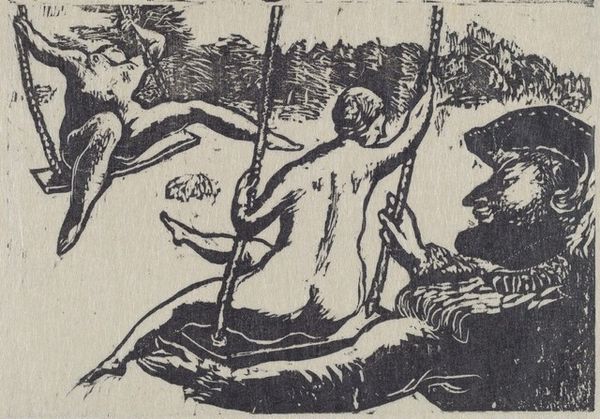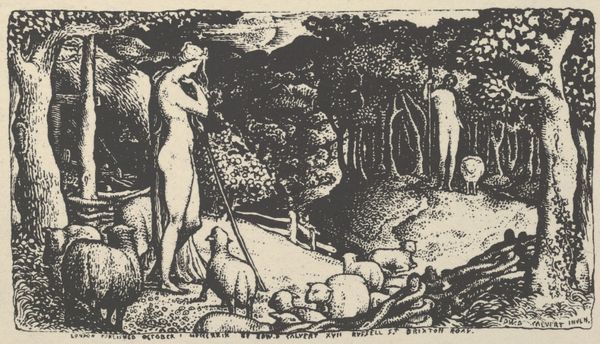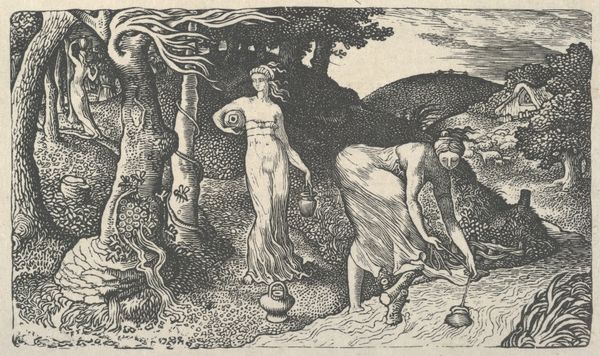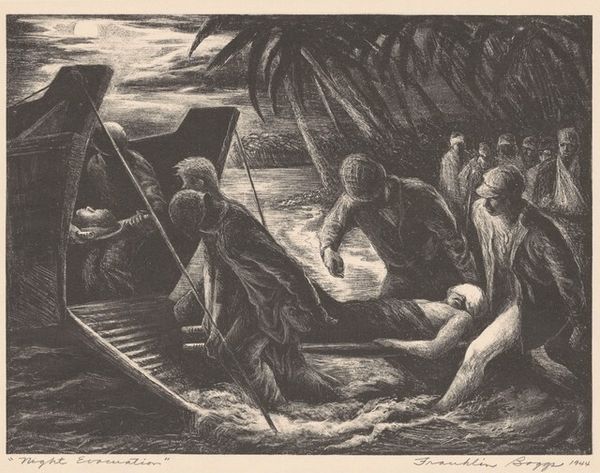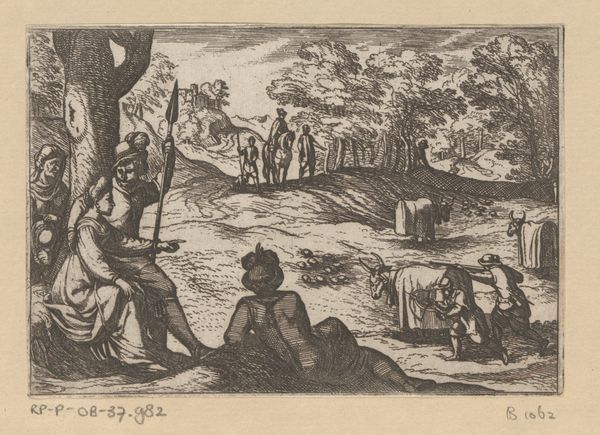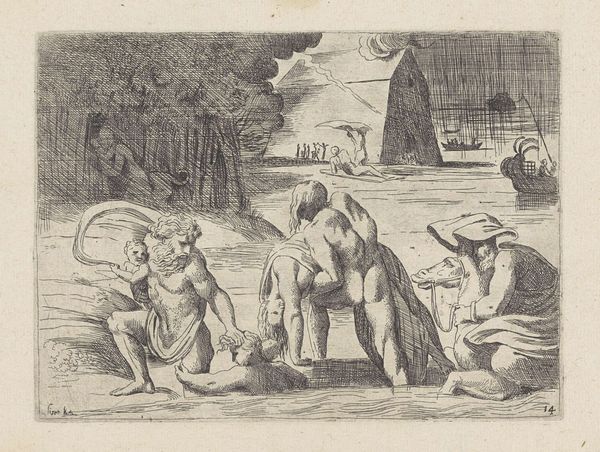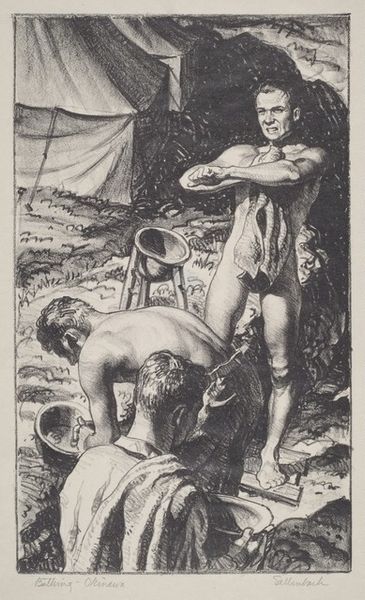
drawing, print, etching, ink
#
drawing
#
narrative-art
# print
#
etching
#
landscape
#
figuration
#
ink
#
romanticism
Dimensions: image: 1 11/16 x 3 in. (4.3 x 7.6 cm) sheet: 3 5/8 x 5 7/16 in. (9.2 x 13.8 cm)
Copyright: Public Domain
Edward Calvert made this tiny wood engraving, "The Flood," in 1829. It shows a man carrying a woman across a stream, with another figure clinging to her legs and other figures walking into the woods on the other side. It was made during a period of agricultural depression in England. At this time, the rural idyll had become a powerful trope in art, literature, and social thought. It was a yearning for escape. Calvert was associated with William Blake and his circle of artists called the "Ancients." Like Blake, Calvert was interested in spirituality, and the images can be interpreted in terms of Christian salvation. Here, the family group, along with the figures with their flock of sheep, could be seen as seeking refuge from the flood of materialism and urbanisation that was sweeping through England at the time. To better understand the image, we can look to its visual codes, cultural references, historical associations, and Calvert's connections with institutions such as the art academy and the church. Doing so helps us reflect on how art is contingent on social and institutional context.
Comments
No comments
Be the first to comment and join the conversation on the ultimate creative platform.

